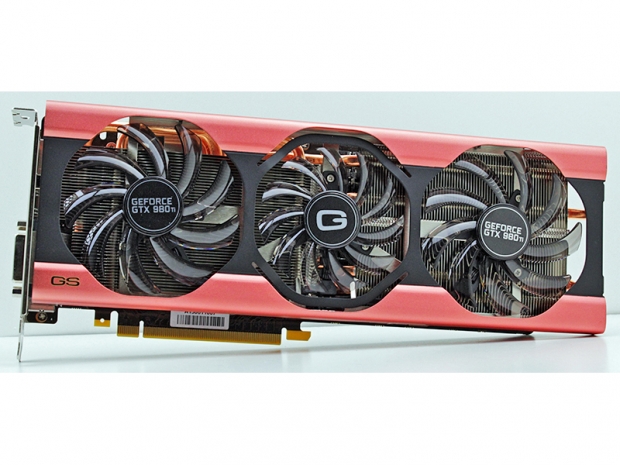Gainward GTX 980 Ti Phoenix Golden Sample (GS) card used in this review comes with a hefty factory overclock which sets the base GPU clock to 1152MHz.
The Reference base GPU clock is 1000MHz. The Boost clock is 1241MHz compared to the 1074MHz reference. Higher clocks are translated directly into higher performance making this card perfect for users who want highest performance right out of the box. The Phoenix cooler does a great job keeping everything under control. 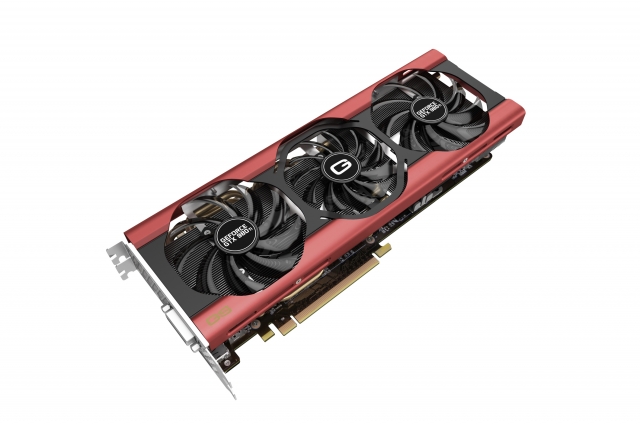
The 980 Ti Phoenix is priced at $700. This is relatively high price but still it is considerably cheaper than the GTX Titan X ($1000). And the 980 Ti Phoenix outperforms Titan X in most scenarios, especially in games.
For those who came in late, the GTX 980 Ti is based on a version of the 28nm GM200 GPU, seen earlier on the GTX Titan X graphics card. The GPU packs 22 enabled SMM units for a total of 2816 CUDA cores and 176 texture units (TMUs).
The CUDA core number was cut from 3072 and the amount of memory was slashed to 6GB. However the number of ROPs, amount of L3 cache and the memory interface is the same as the Titan X.
The Geforce GTX 980 Ti packs 96 ROPs, 3MB of L3 cache and 6GB of memory paired with a 384-bit memory interface. The new Geforce GTX 980 Ti has the same 250W TDP and needs 8+6-pin PCI-Express power connectors.
Gainward did not overclocked the memory which is left at a default 7GHz (effectively GDDR5), but as you will see you can overclock the memory and GPU even further.
The Packaging
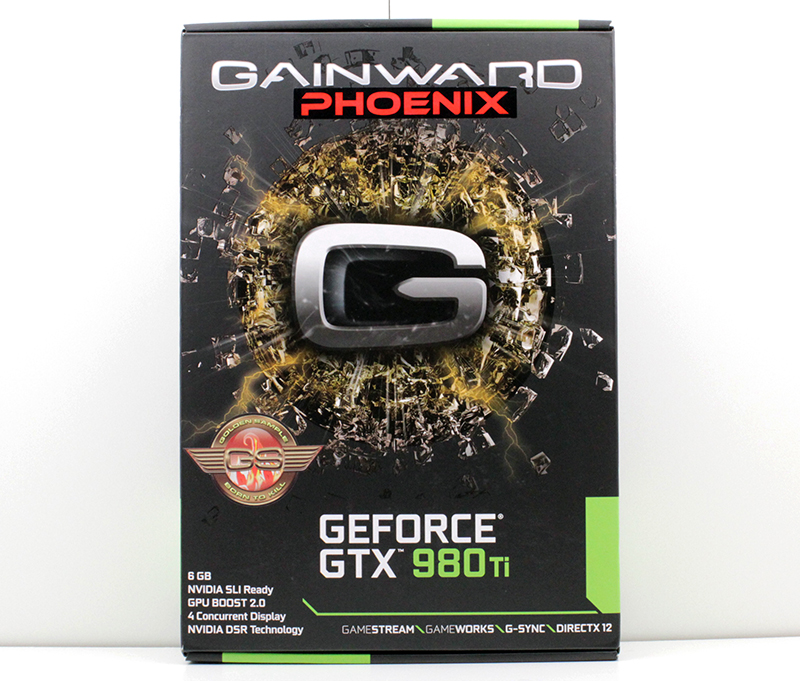
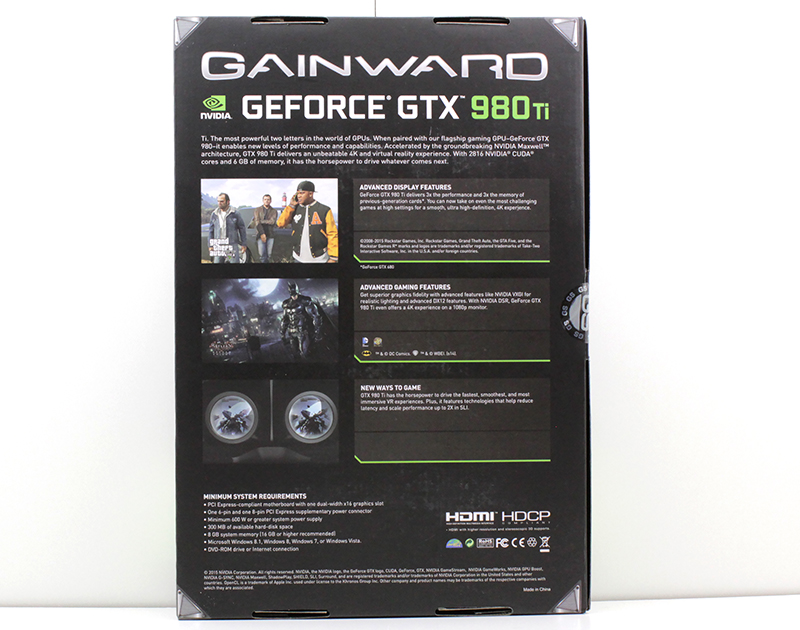
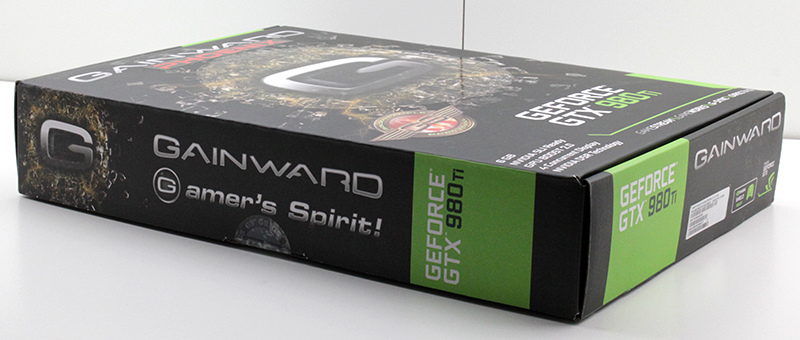
In the box you’ll find:
- Quick Installation Guide
- Driver DVD
- HDMI to DVI Dongle
- 1x 6-pin to 8-pin Power Adapter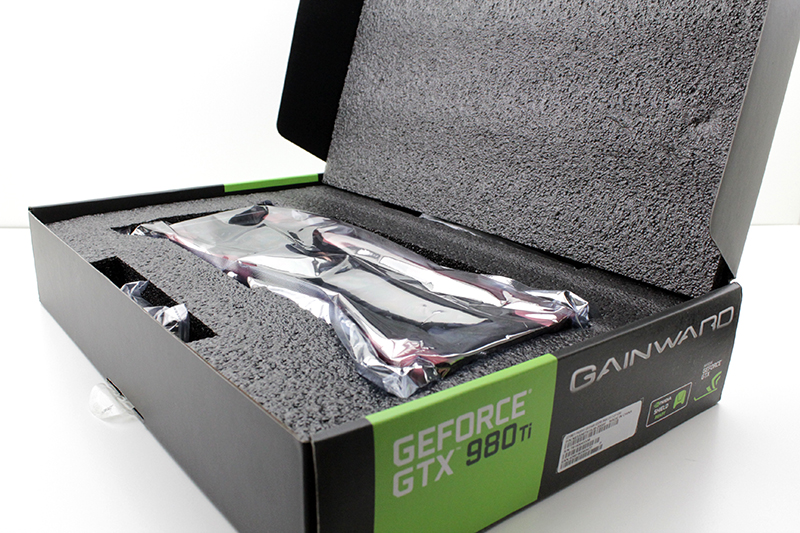
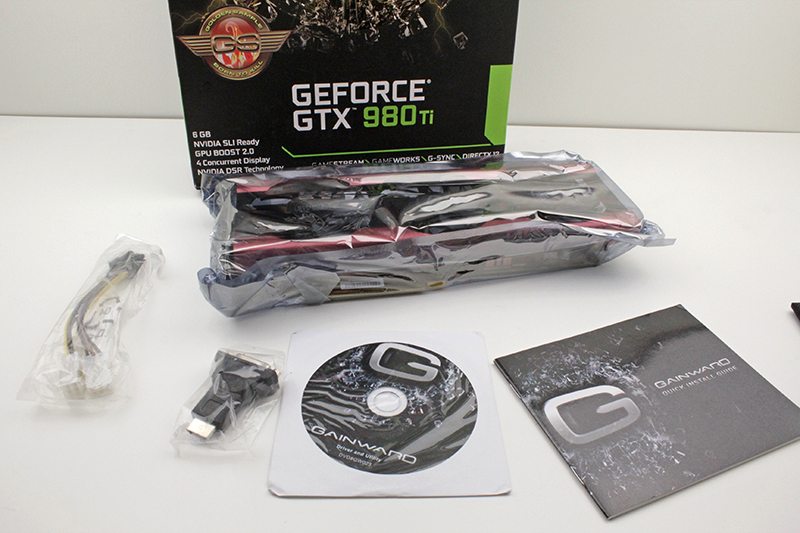
A closer look at Phoenix GS
Gainward went with a new Phoenix cooler design and we welcome it. We remember the great Phantom cooler which was used for top of the line cards in the GTX 980 series and some previous generations. The Phantom cooler performed well and was famous for the removable fan feature, as shown in the image below. However its 2.5 slot width was drawback for some users.
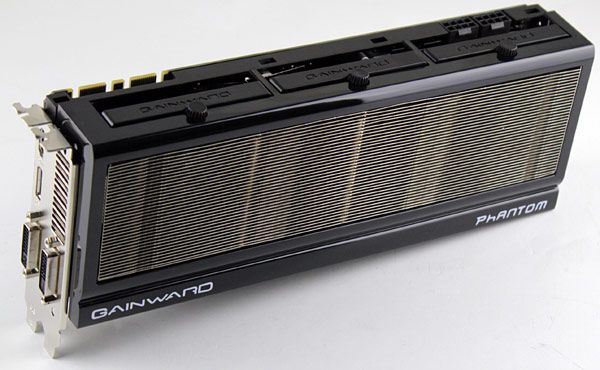
The fans of the Phantom cooler can be removed without removing the heatsink or messing with the wiring.
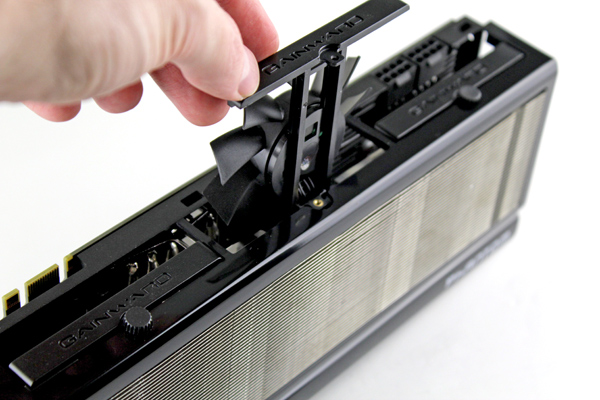
The new Phoenix cooler is shown in the image below. We’re talking about a two-slot cooler with a large heatsink and three fans on top. The two-slot cooler provides users the flexibility for choosing smaller computer cases, or it can be perfect for enthusiasts who want to use the card in three-way or four-way SLI setups.
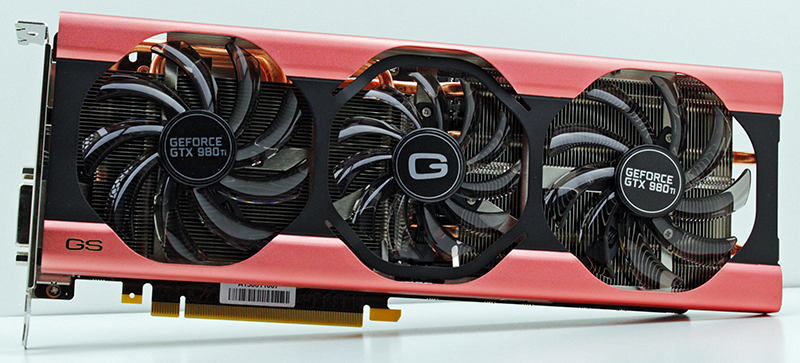

The Phoenix cooler relies on two 8.5cm and one 7.5cm (middle) fan for good cooling.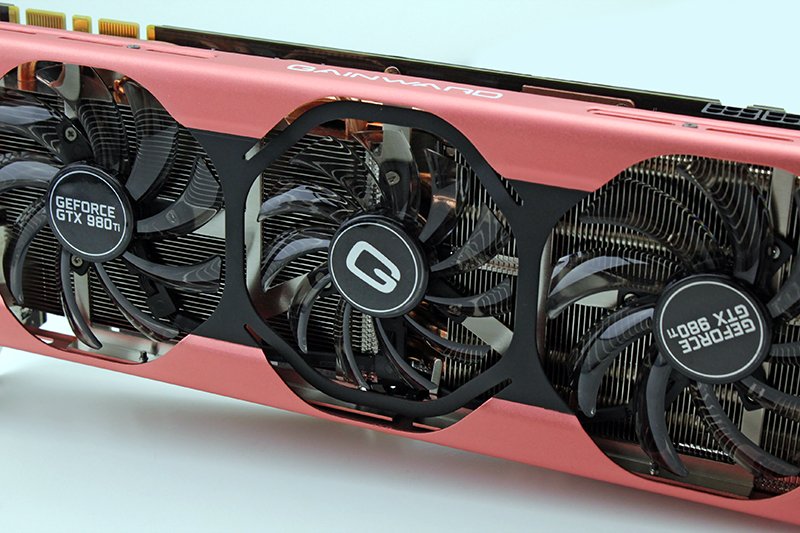
Gainward added a bit of value to the GTX 980 Ti with a custom design and generous factory overclock. If you prefer an Nvidia reference design, you can find it also in Gainward’s portfolio. Next image shows Gainward GTX 980 Ti.
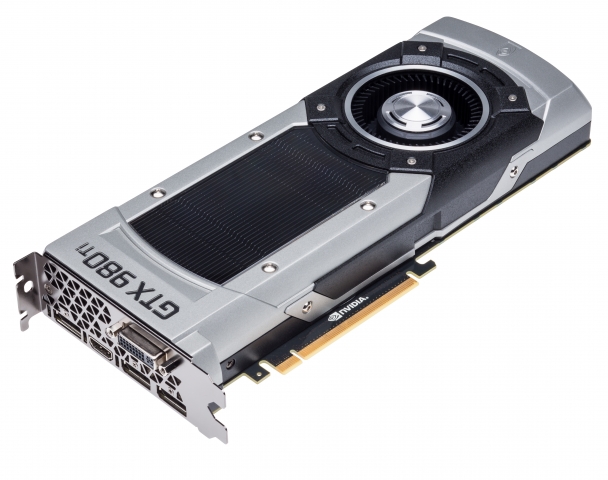
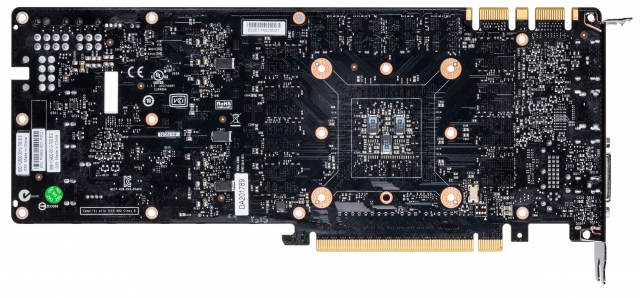
We missed the backplate on the GTX 980 Phantom card. The backplate is not used for the reference GTX 980 Ti too, but the GTX 980 Ti Phoenix GS card comes with it. It is not that much important for the cooling but the backplate adds much to the overall image of the card.
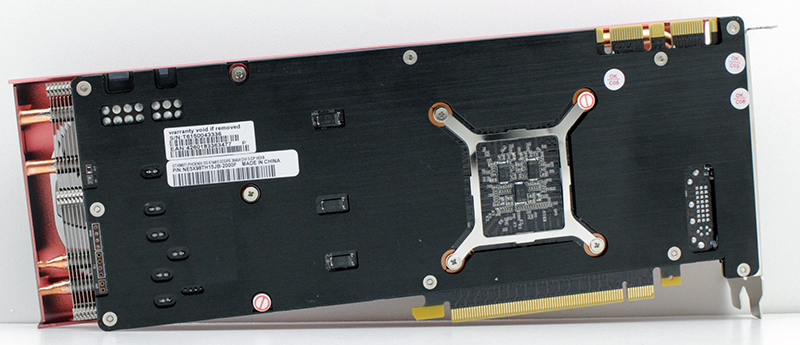
A closer look at Phoenix GS continued
The Phoenix card is 292mm long (267mm reference board) and 112mm tall. The metal shroud looks nice. It is open on all sides and the openings serve as exhaust vents. We always advise users to clean the heatsink regularly. It’s good for the card and it also helps keep fan RPMs as low as possible. Accessing the heatsink is relatively easy. You can remove the shroud simply by undoing four screws that keep it attached to the heatsink.
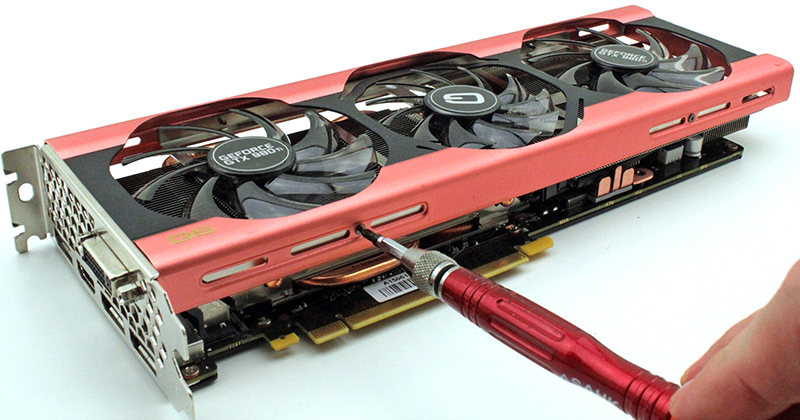
The fans are attached directly to the heatsink, each fan with three screws.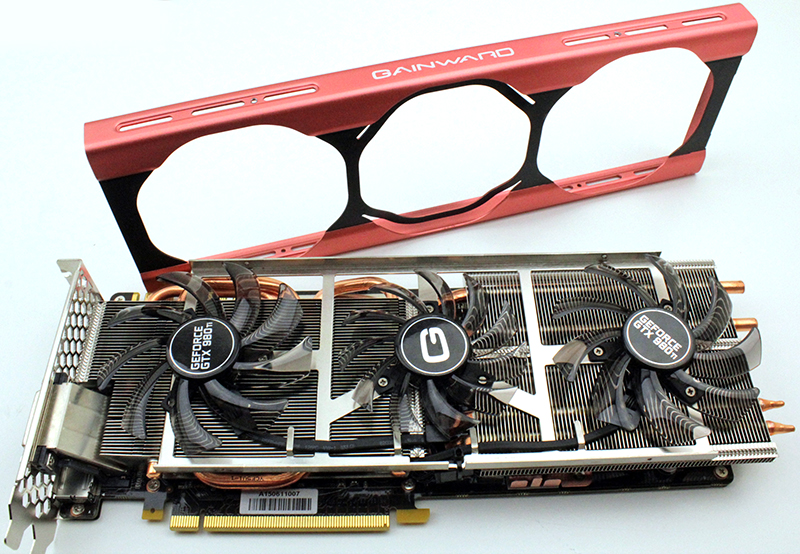
Power Logic fans are chosen due to its dense, curved blade design.
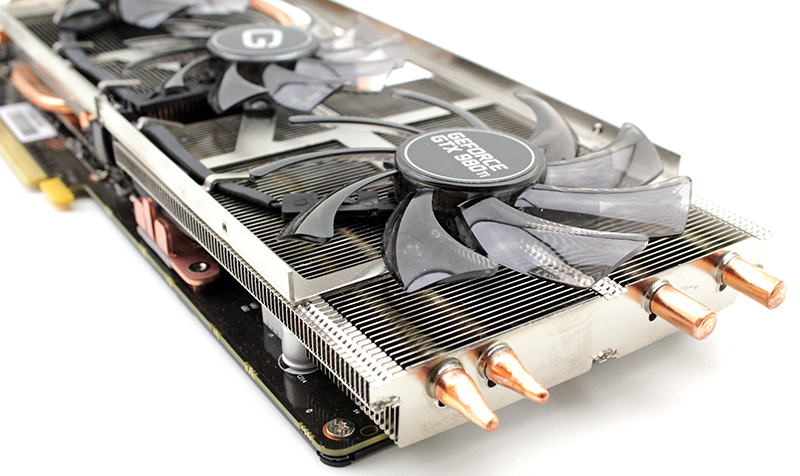
Here you can see the heatsink. Everything feels solid and precise.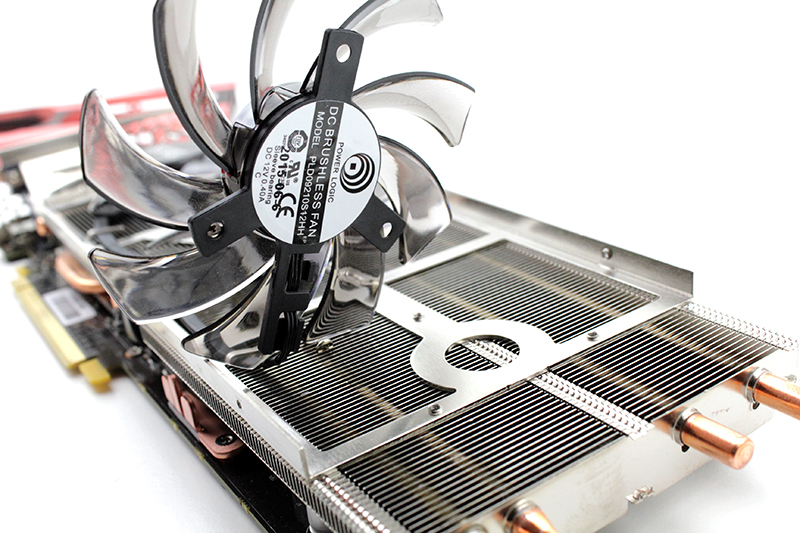
The Phoenix cooler has unusual heatsink design. It is made longer than the PCB to maximize dissipation surface. We have never seen the fins of the left part of the heatsink positioned differently from the right heatsink. But as long the performance is good we dont mind it.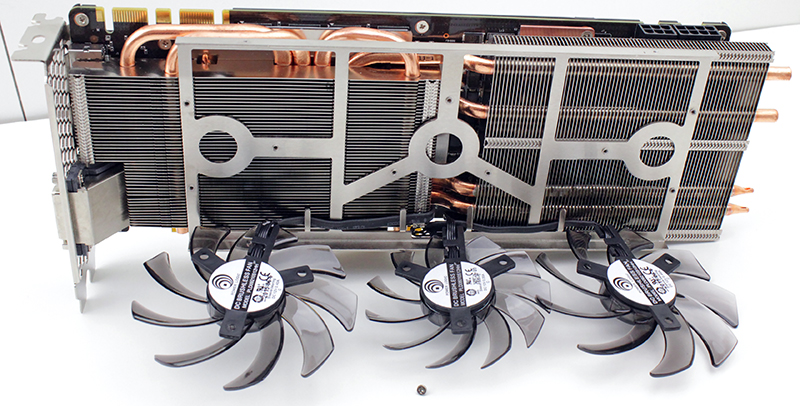
All the fans are connected using a single 4-pin connector, and fan RPM can be regulated via different tools, like Gainward’s own EXPERTOOL.
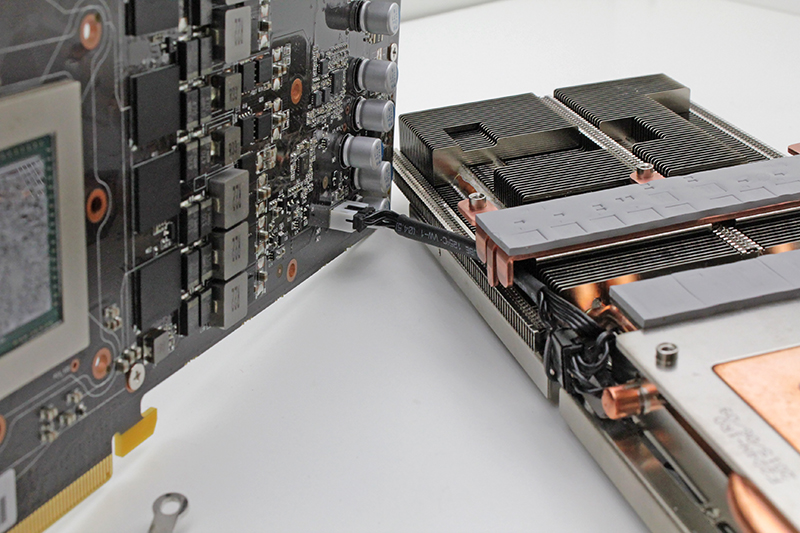
There is no need to remove the entire cooler but we removed it to show the PCB. Note that removing the whole heatsink will void warranty.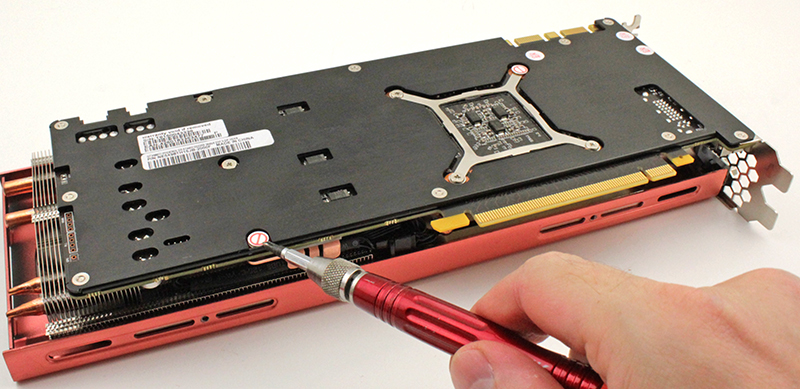
The VRM heatspreader is made from copper and it is soldered directly to the main heatsink which improves heat dissipation.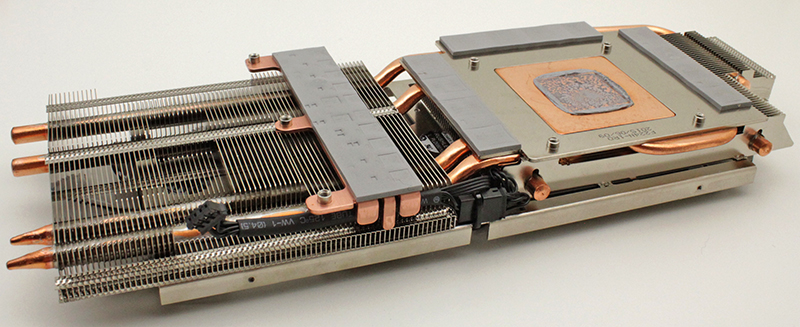
The Phoenix cooler comes with elaborate heatpipe system.

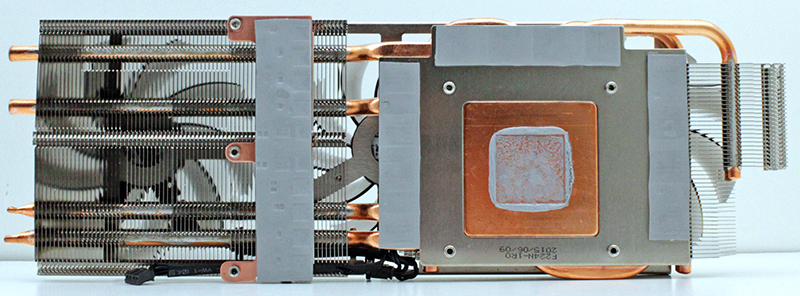
The PCB looks a lot like the reference GTX 980 Ti board. There are only small changes in the layout. This design includes six phases +2 power supply with DrMOS for GPU core and two phases power supply for graphics memory that helps supply enough fuel to the 3D graphics engine and memory chips. Those six phases +2 PWM for those 2816 cores dynamically balance current loading for each phase to maximise the efficiency and stability the voltage level, the overall efficiency can be improved. The choke noise and EMI noise also be reduced.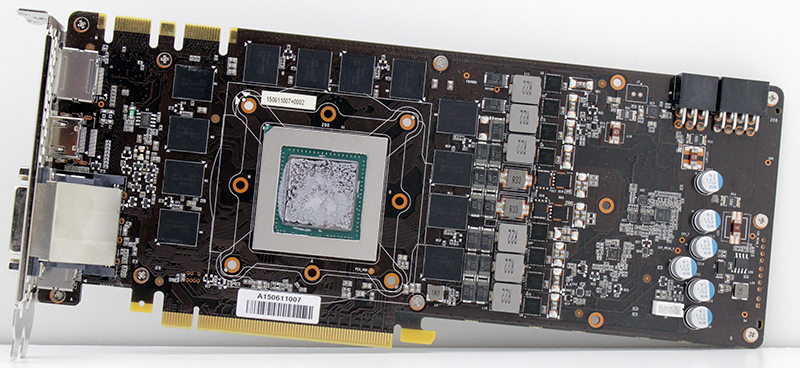
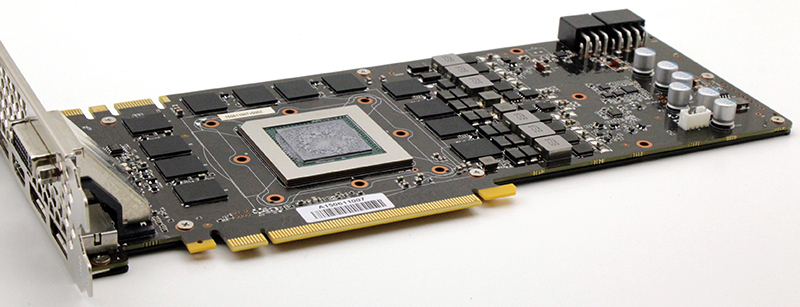
The card uses an OnSemi NCP81174 voltage controller. The same controller is used for the GTX 980 Ti reference design.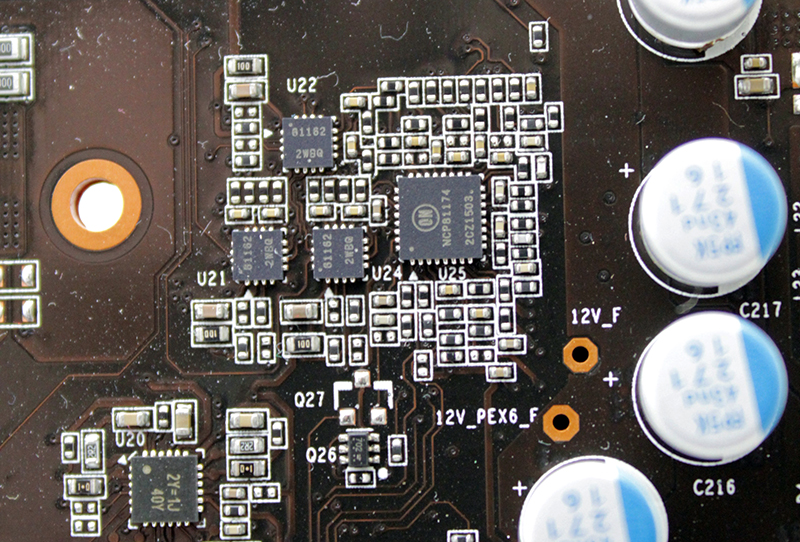
The card has 6GB of GDDR5 memory. The SK Hynix chips, (model H5GQ4H24MFR-R2C) are specified to run at 1750 MHz (7000 MHz GDDR5 effective). All the memory modules are located at the front of the PCB, in the vicinity of the GPU.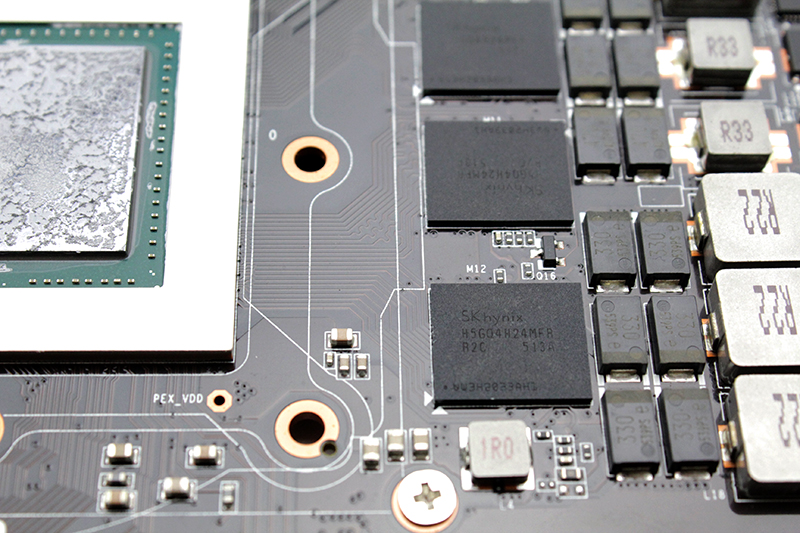
The reference Geforce GTX 980 Ti comes with three DisplayPort, single HDMI (version 2.0 which enables 4K content at 60Hz in full 444 RGB colorspace) and single dual-link DVI display outputs. The Gainward GTX 980 Ti Phoenix Golden Sample card has the same configuration of video outputs. Four video outs can be used at the same time.

Like the reference card the new Phoenix also needs 8+6-pin PCI-Express power connectors.
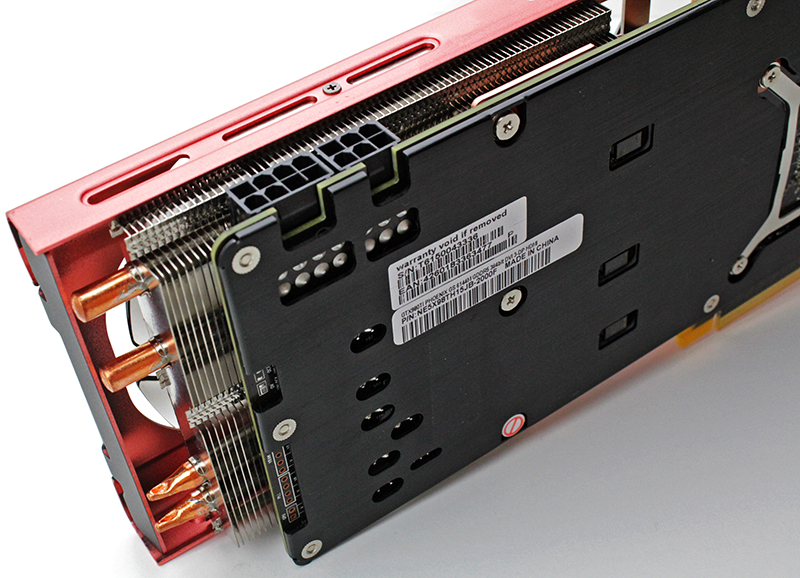
The GTX 980 Ti Phoenix Golden Sample is ready for multi-GPU action, be it in standard two-card SLI, or 3-way and 4-way SLI. It features two SLI connectors.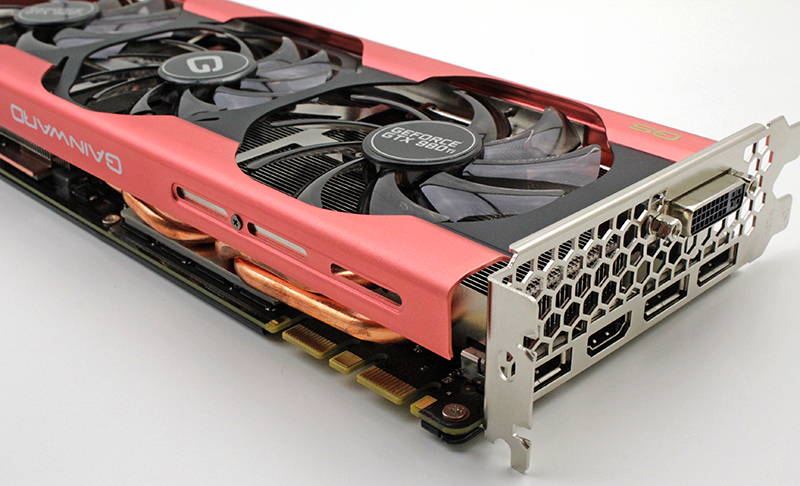
Testbed
Testbed:
- Motherboard: EVGA X99 FTW
- CPU: Intel Core i7 5960K, 4.2GHz (Haswell-E)
- CPU Cooler: Thermalright HR-02
- Memory: 4x4GB Kingston HyperX Predator DDR4 Memory Review (HX430C15PBK4/16)
- SSD:To shiba THNSNJ256GCSU 256GB
- Case: CoolerMaster Cosmos II
- Operating System: Win10 64-bit
Drivers:
- Nvidia 355.60
3DMark
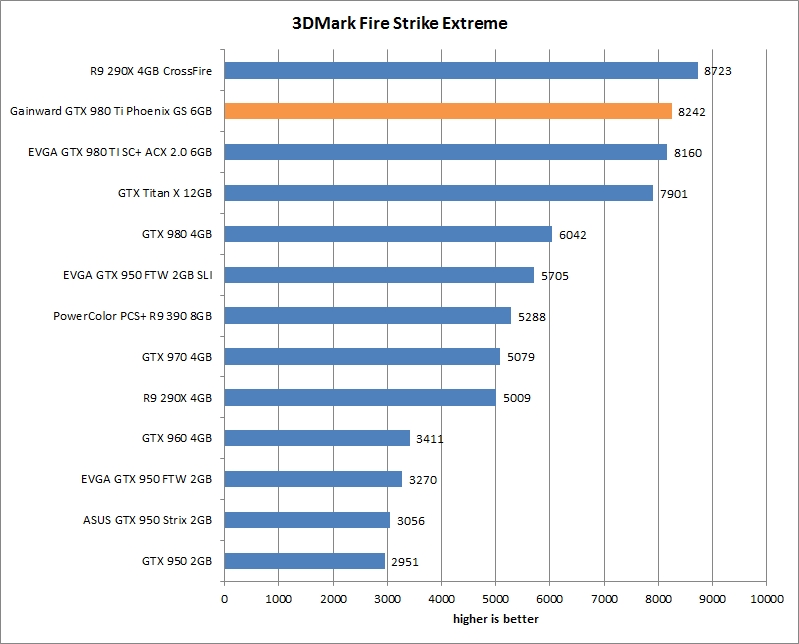
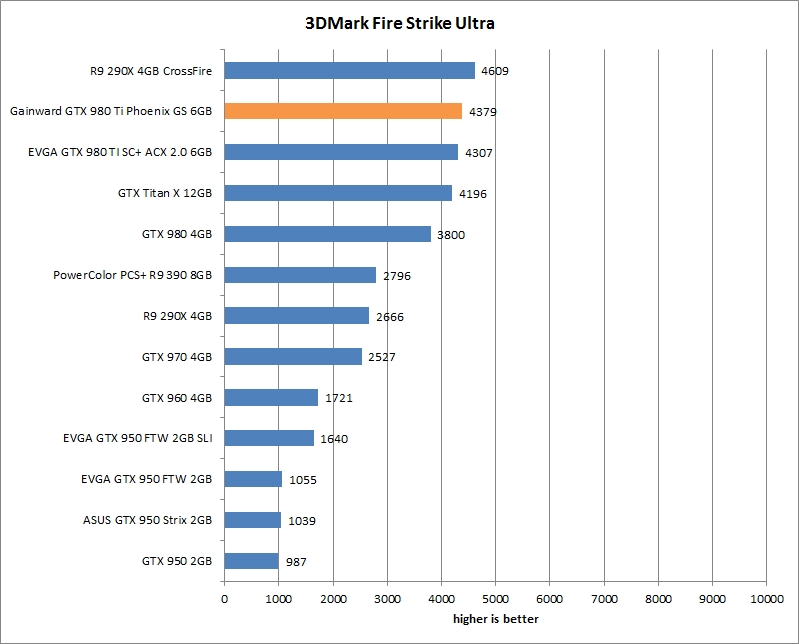
Battlefield 4
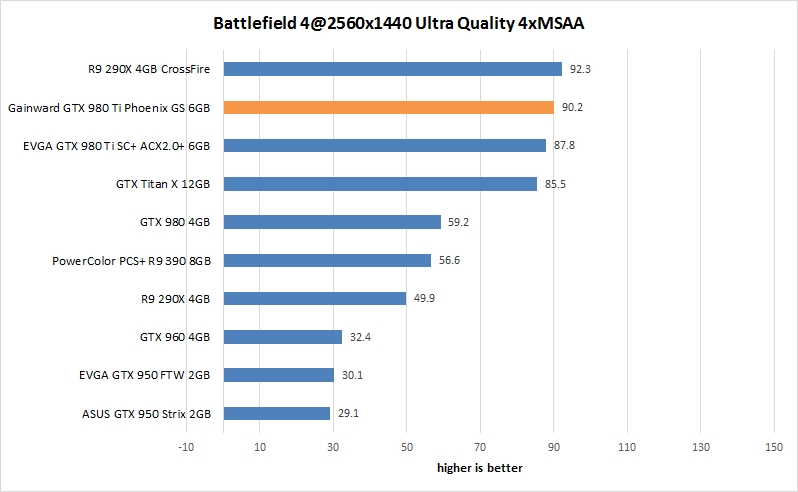
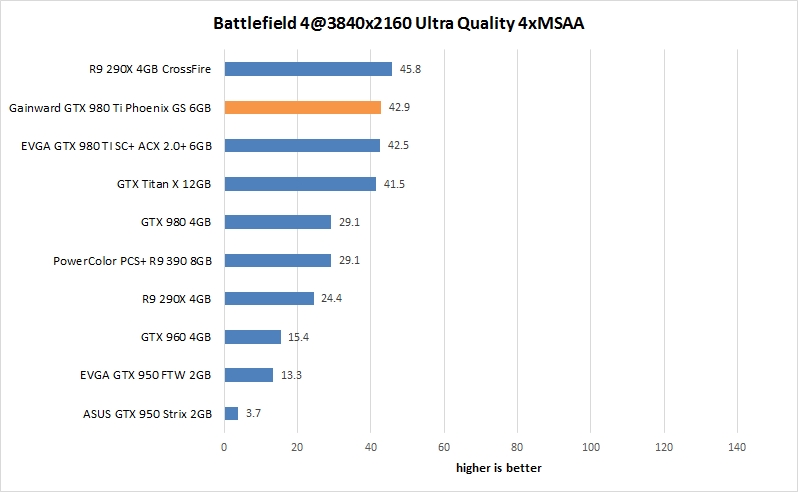
BioShock Infinite
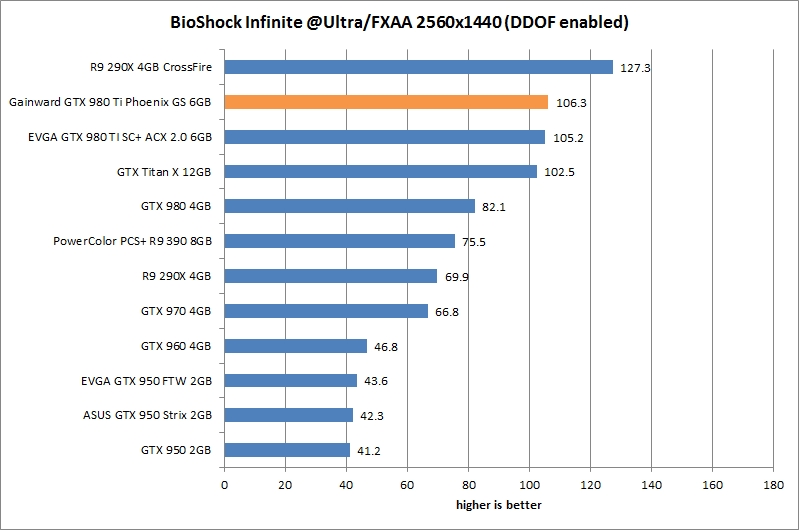
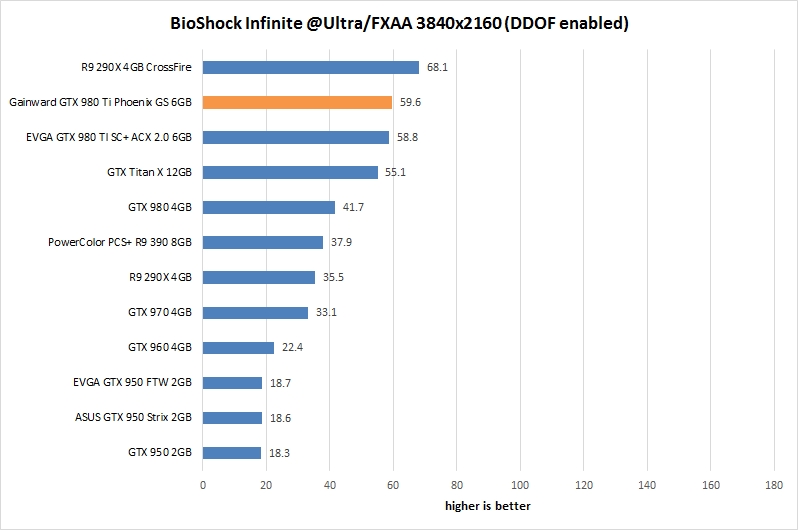
The Witcher 3
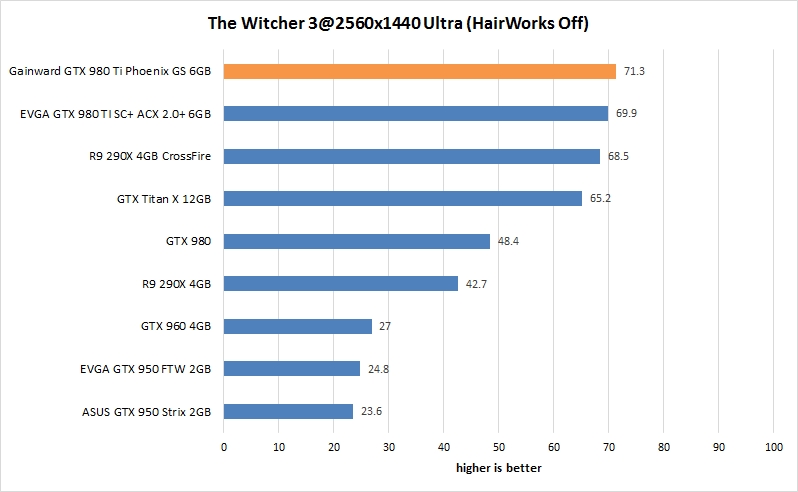
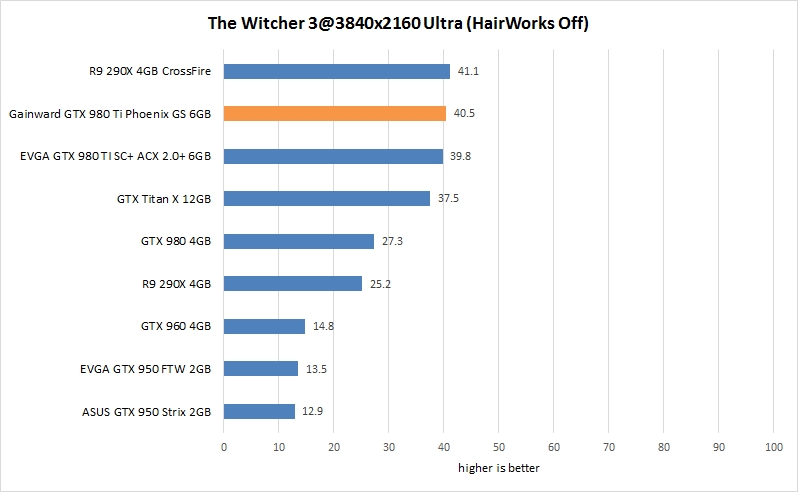
Thermals and Noise
The new Phoenix cooler is superior to the reference design as it keeps the GPU temperatures below 75 degrees Celsius. The Phoenix cooler ensures the card maintains the maximum Boost clock possible for as long as possible. The new Boost 2.0 algorithm will reduce the GPU Boost clocks on the GTX 980 Ti if the GPU temperature goes over 84 degrees Celsius respectively, but the Phoenix cooler keeps the GPU temperature significantly lover.
The card is completely silent in idle and during media playback or light gaming. Namely the card turns its fans off when GPU temperature is below 60 degrees Celsius. The Phoenix cooler is quiet, almost inaudiable, even under load. The Gainward's own EXPERTool utility adds some features for GTX 980 Ti board such as changing fan curve and BIOS saving function.
The user can push fans to run at about 3400RPM. In this mode the GPU temperature reaches only 62 degrees Celsius. Even at this speed the fans are still not too loud. We could not hear coil whine.
Overclocking
The Gainward GTX 980 Ti Phoenix works at a 1152MHz base clock, while the reference GPU base clock is set at 1000MHz. The overclocking potential is good considering that this is a factory overclocked card. Using standard voltage and AUTO fan settings we managed to push the GPU 140MHz over the factory clocks. This resulted in a Boost clocks up to 1463MHz. Memory overclocking is vital in any attempt to squeeze out more performance from a graphics card. The memory produced average results with a total 750MHz (effective GDDR5) overclock. Note that each sample overclocks differently and therefore our results can serve only as guideline for what you can achieve with another GTX 980 Ti.
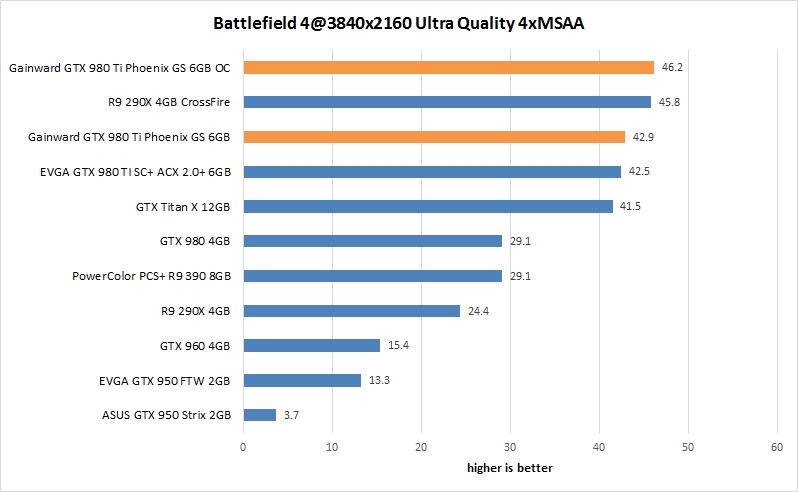
Conclusion
The GTX 980 Ti is Nvidia’s new flagship graphics card, and it is already established as one of the the best gaming graphics cards. The GTX 980 Ti is based on the 28nm GM200 GPU, which is used on the GTX Titan X graphics card. While the number of CUDA cores was reduced and the amount of memory was cut down to 6GB, the number of ROPs, amount of L3 cache and the memory interface remained the same as the Titan X. In games there is little difference between the two. With slight GPU clock increase, the GTX 980 Ti manages to be faster in games than GTX Titan X. Gainward GTX 980 Ti Phoenix Golden Sample comes with a nice 152MHz GPU overclock which translates up to nine per cent performance increase over GTX Titan X, and about 11% increase over the reference GTX 980 Ti.
The GTX 980Ti Phoenix Golden Sample card is available for €700. This is relatively good price if we take into account the price of competing GTX 980 Ti cards. It is not a big price premium (+€20) over Gainward Geforce GTX 980 Ti card based on a reference clock. Also it is €300 cheaper than GTX Titan X.
Gainward went with a new cooler design which was good. The Phoenix cooler features idle-fan-off capability and this means the fans are not spinning at all at idle and light loads. Also the cooler keeps the card quiet even during long gaming sessions. The card is factory overclocked but this does not mean the fun stops there. We raised the GPU clock by additional 140MHz and the fans were still quiet.
The GTX 980 Ti is the right card to experience a whole new class of the performance enhanced gaming environment. The user can freely experiment with all the new Nvidia features including hyper-realistic real-time global illumination with advanced NVIDIA VXGI, as well as NVIDIA G-SYNC display technology.
Gainward GTX 980 Ti Superclocked Golden Sample is faster than GTX Titan X but is considerably cheaper. Until recently is was impossible to play games smoothly at 4K resolution, but with the last generation of the high end cards, including Phoenix card we can. In other words the GTX 980 Ti Phoenix Golden Sample has enough under the hood to drive whatever comes next.

